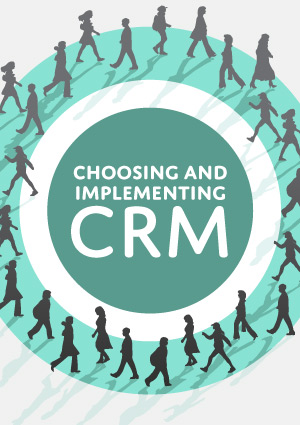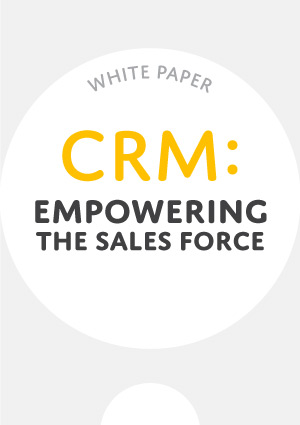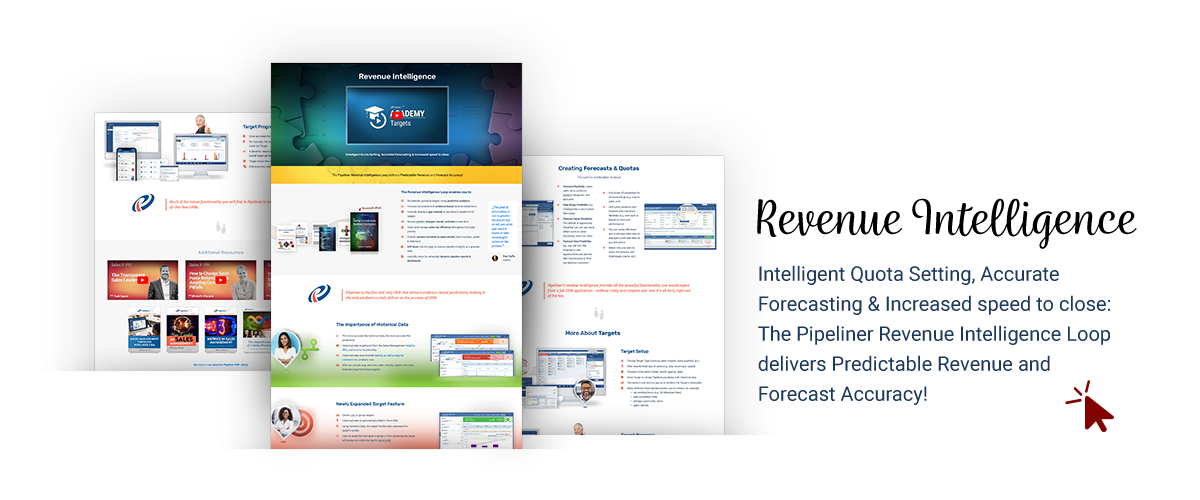Contact Management Software
What is CRM
- What is CRM?
- Customer Relationship Management Software
- Account Management Software
- Contact Management Software
- Sales Lead Management
- Opportunity Management
- Sales Pipeline Management
- Customer Relationship Mapping
- Sales Enablement Tools
- Sales Management Software
- Sales Process
- Sales Reporting
- Task Management
- Custom Fields
- Team Collaboration
- KPIs for Sales & Leading and Lagging Indicators
- CRM Past Failures?
What is Contact Management?
Contact management is a method of storing, quickly accessing, editing, and tracking customerCustomer Customer is an individual or an organization that purchases a product or signs up for a service offered by a business. and leads dataData Data is a set of quantitative and qualitative facts that can be used as reference or inputs for computations, analyses, descriptions, predictions, reasoning and planning.. Contact management software can be as basic as a spreadsheet or as sophisticated as customer relationship management software.
To make a sale in today’s business environment, you must do more than simply personalize a sales email with someone’s name. Customers are loyal to businesses that remember their specific preferences, and they expect to have a positive experience every time they place an order or receive a package in the mail. Going above and beyond encourages repeat sales and referrals, which can significantly reduce your overall customer acquisition costs.
What is Contact Management Software?
Contact management software can organize searchable information about prospects and current customers. The software can handle basic information, such as names, phone numbers, and email addresses. It can also keep track of important calendar events and fundamental interactions between the company and the contact.
Contact management solutionSolution Solution is a combination of ideas, strategies, processes, technologies and services that effectively helps an organization achieve its goals or hurdle its challenges. tools are especially popular among SMBs, where a team member, contact manager, or sales managerSales Manager Sales Manager is an executive who leads a sales unit, team or department by setting goals and meeting targets, formulating plans and policies, designating tasks, and developing salespeople. may play multiple roles for a single contact. Contact management is also critical in e-commerceE-Commerce E-Commerce is a field, platform, or environment where the buying and selling of goods and services are transacted online., where repeat customers mean the difference between a one-time deal and long-term customer value.
The primary aim of developing an automated contact management system is to assist any firm in more robustly and efficiently storing and retrieving all information about an existing clientClient A client is an entity who pays another entity for products purchased or services rendered. Also called a customer.. This efficiency is further enhanced by features that streamline workflow and task delegation, allowing teams to handle customer interactions more effectively.
What factors should I consider when choosing contact management software for my business?
When evaluating contact management solutions, start by identifying the specific needs and challenges of your team. Consider the following factors to ensure the software truly supports your business objectives:
- Core requirements: Determine what your team struggles with most. Are you looking to streamline organizationOrganization Organization is a cohesive group of people working together and formally bound by a shared identity (e.g., one team, company, club, etc.) and a common purpose (e.g., business growth, athletic victory, etc.). and follow-ups, better coordinate marketingMarketing Marketing is the field, set of actions, or practice of making a product or service desirable to a target consumer segment, with the ultimate aim of effecting a purchase. activities, or handle all these areas within one system?
- Automation capabilities: Assess the potential increase in productivity from automation. Features such as automated reminders, email scheduling, and smart notifications can significantly reduce manual work and minimize errors.
- Integration with existing tools: Make sure the software seamlessly connects with tools you already rely on—whether that’s your current CRM, email provider, or platforms like Google or LinkedInLinkedIn LinkedIn is a social network for the business community. for richer customer profiles.
- Ease of use and scalability: The solution should be userUser User means a person who uses or consumes a product or a service, usually a digital device or an online service.-friendly so your team can adapt quickly, and flexible enough to grow alongside your business.
- Robust reporting and insights: Access to real-time data, customizable dashboards, and detailed reporting helps your business spot opportunities and trends, driving smarter decisions over time.
By paying attention to these key areas, you’ll be better positioned to select a contact management platform that not only meets your requirements today but also adapts as your business evolves.
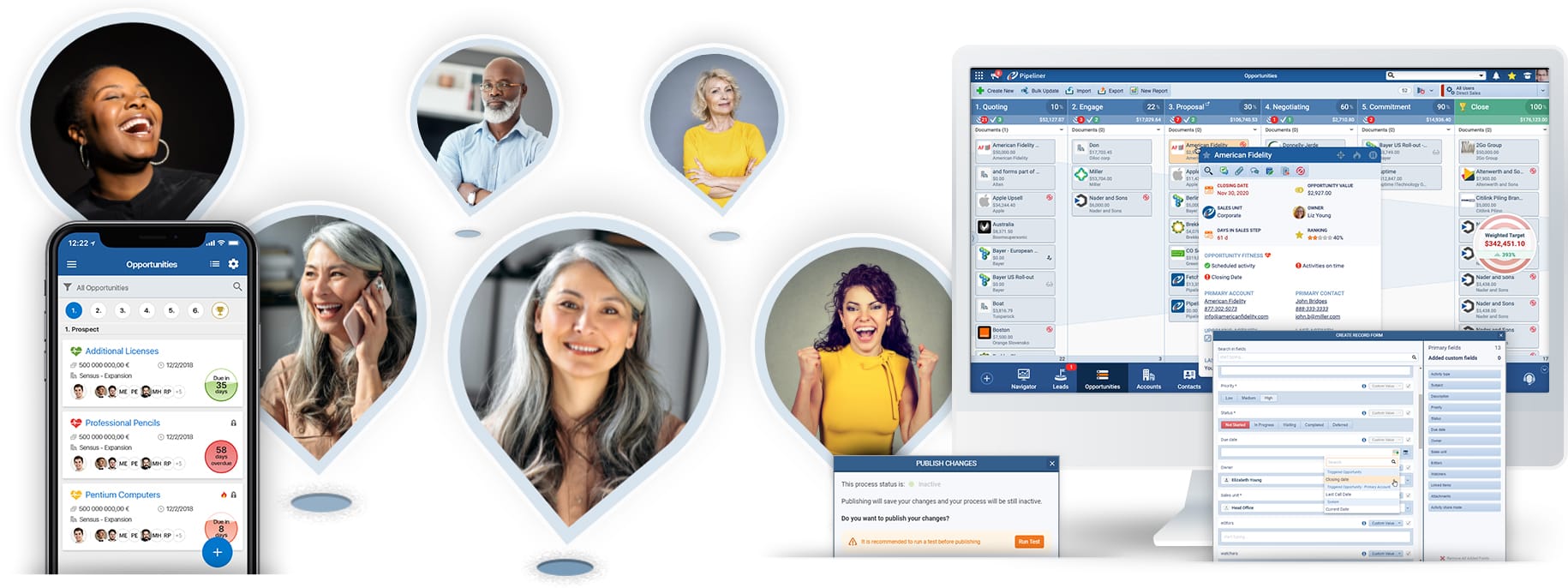
Why use it for sales?
It records your customer interactions
Log all cross-channel communications with customers automatically, so you have a record to refer to later. This information will be essential in choosing what good or service to offer them for cross-sellingCross-selling Cross-selling B2B is when a customer purchases a product and they are offered a second product at a discount or as a reward. and up-selling, the mode of your subsequent interaction, and how to deal with clients who are similar in the future. With advanced data integration, such as pulling information from platforms like Google and LinkedIn, your team can gain deeper insights into customer behavior and preferences.
Enhance the customer experience
When using all-in-one contact management, customer service agents can deliver better results with less effort. They’ll have easy access to a centralized contact list that includes detailed records of previous cross-channel customer interactions. They will also have efficient access to task notifications and follow-up reminders. This seamless access to information enables teams to share knowledge and make informed decisions that enhance the overall customer experience.
Arrange all of your information in one location
Contact information is delivered to you via a variety of channels, including social media, live chat, phone calls, your company website, face-to-face conversations, purchase records, and more. A contact management platform consolidates all of this information, including address books and phone numbers, into a single business contact record that you can access from a single location.
Aids in team collaboration
A centralized contact record increases visibility for everyone in your company and makes your organization smarter and more transparent. Team members can consult individual case files worked on by other staff members in real-time, reducing the need for in-person meetings. This eliminates tasks, hand-off errors, and redundant work while also encouraging open collaboration.
Effective contact management software not only organizes your data but also empowers your team to streamline workflows and delegate tasks efficiently, ensuring that every customer interaction is optimized for success.
Experience Pipeliner CRM Now
What are the Stages of Managing Contacts in a Sales FunnelSales Funnel Sales Funnel is a visualization of the sales process that defines the stages through which prospective customers go through as they are led by sales professionals towards a purchasing decision.?
Successfully managing contacts throughout the sales funnel involves several key stages, each focusing on different aspects of nurturing and conversionConversion Conversion is the process of turning a target consumer into a paying customer; or more generally, the point at which a user performs a specific action favorable to a marketer or a seller.. Let’s explore each phase:
1. Building Your Contact Database
Your journey begins by assembling an all-encompassing contact database. This includes collecting vital information like verified emails and phone numbers of potential customers. Utilizing lead generationLead Generation Lead Generation is a set of activities aimed at generating interest around a product or service through methods such as 1. content marketing (blogging, podcasts, free downloads); 2. advertising (PPC, banner ads, Yellow Pages, sponsoring an event); 3. referrals (recommendations from existing customers and other people); 4. outbound marketing (cold email, cold calling), and 5. partnerships (joint ventures, affiliate marketing). tools can assist in populating your list with quality leads, setting a solid foundation for further engagementEngagement Engagement is the state or process of keeping a specific class of audience (employees, management, customers, etc.) interested about a company or brand and invested in its success because of its perceived relevance and benefits to the audience..
2. Engaging Leads and Prospects
Once you’ve built your database, the next step is effectively engaging those leads. Implement tools dedicated to managing and nurturing leads to maintain consistent communication. By refining your approach, you ensure leads remain interested and continue moving through the funnel.
3. Email Marketing and Communication
Email marketing is essential in keeping your contacts informed and interested. Leverage campaign tools to craft engaging email sequences that speak directly to your audience’s needs. This helps in building trust and encouraging prospects to take the next step towards making a purchase.
4. Document Management and Finalizing Deals
As prospects transition into customers, the need for efficient document management becomes paramount. Deploy systems for handling contracts, documents, and e-signatures seamlessly. Creating templates for frequently used documents can streamline this process and ensure consistency across your sales team.
These stages provide a comprehensive framework for guiding contacts through the sales funnel, ensuring every opportunity is maximized for conversion.
The Essential Role of Follow-Up Workflows in LeadLead Lead refers to a prospect or potential customer (who can be an individual or organization) that exhibits interest in your service or product; or any additional information about such entity. Conversion
Follow-up workflows are a pivotal component in transforming potential leads into confirmed customers. At their core, they ensure timely communication, which is crucial when your leads are eager and interested. By automating the process, you ensure no opportunity slips through the cracks due to human oversight or delay.
Maximize Efficiency with Automation
Instead of allowing manual tasks to slow your process, automated follow-up emails can keep your leads engaged. These workflows enable your team to send tailored communications promptly, ensuring the information you provide is both relevant and timely. A Customer Relationship Management (CRM) system can streamline this process by sending these emails at scale, which is essential for maintaining engagement with a broad audience.
Free Up Time for Your Sales Team
Workflow automation doesn’t just enhance communication; it liberates your sales team to focus on their primary objective—closing deals. With routine follow-up actions handled by the system, your sales professionals can invest their time in more strategic tasks, like personalizing pitches or addressing specific client concerns, which directly influence conversion rates.
Customizable and Scalable Email Campaigns
The beauty of workflow automation lies in its adaptability. Email templates can be customized to align with your brand’s voice and the diverse needs of your audience. Whether you’re dealing with small businesses or enterpriseEnterprise Enterprise (in the context of sales) is a relatively large organization typically composed of multiple levels, locations, and departments which need multi-layer software systems that support collaboration across a large corporate environment. clients, scalable email marketing campaigns can cater to various segments, ensuring each lead receives a message that resonates with them personally.
Streamlined Sales Activities
By integrating automations into your sales process, you can maintain a streamlined operation where every team member is fully aware of where each lead stands in the sales funnel. This cohesive approach not only improves internal communication but also accelerates the journey from lead to satisfied customer.
In conclusion, follow-up workflows serve to enhance the efficiency, personalization, and effectiveness of your lead conversion strategies. By keeping potential customers engaged and freeing your team to focus on high-value tasks, these workflows significantly increase the likelihood of closing more deals.
How Detailed Reporting Boosts Sales, Service, and Contact Management
Unlock Actionable Insights
Detailed reporting transforms raw data into actionable insights, enabling businesses to optimize their sales strategies. By analyzing patterns and trends, you can identify which activities lead to successful conversions. This knowledge allows you to allocate resources more effectively and focus on strategies with the highest return on investment.
Enhance Decision-Making
Informed decision-making hinges on a comprehensive understanding of your business activities. Customizable reports provide a clear picture of your sales and service operations, helping you make decisions grounded in data. This ensures that every move is calculated and contributes to overall growth.
Visualize Progress and Performance
Interactive dashboards can make data visualization more accessible. With clear graphs and charts, teams and stakeholders can quickly assess performance metricsMetrics Metrics are quantities that are measured and used to:. This level of transparency not only boosts team morale by showcasing achievements but also highlights areas needing improvement, ensuring continuous progress.
Foster Collaboration and Strategy Alignment
When you share insights across your team and stakeholders, everyone gains a unified understanding of business goals and performance metrics. This shared knowledge fosters collaboration, aligning everyone’s efforts toward common objectives, and ensuring that services are delivered consistently.
Adapt and Customize
Every business is unique, and so are its reporting needs. By customizing report types, you tailor the insights to your specific business context. This means you can track metrics that truly matter to your industry and organizational goals, leading to more targeted improvements in sales and service management.
In summary, detailed reporting isn’t just about numbers—it’s about turning those numbers into growth opportunities. By leveraging detailed insights, you can enhance your decision-making, boost team alignment, and continually improve your sales, service, and contact management strategies.
How Email Marketing Add-Ons Enhance Engagement with Leads
Email marketing add-ons are powerful tools that can significantly boost your engagement with potential customers. Here’s how:
1. Targeted Campaigns: Through advanced segmentationSegmentation Segmentation is the process of subdividing a large market into distinct partitions (or segments) based on demographics and other factors, with the aim of formulating and implementing separate strategies to better engage the consumers in each segment., these add-ons allow you to tailor your marketing messages to specific groups within your contact list. For example, using tools like Mailchimp or Constant Contact, you can create customized campaigns based on user behavior, demographics, or past interactions, ensuring your message resonates with the recipient.
2. Automated Workflows: Add-ons often include automation features that trigger personalized emails based on specific actions, such as subscribing to a newsletter or making a purchase. This means you can reach out to your leads at the optimal time without manual intervention, keeping them engaged without the extra effort.
3. AnalyticsAnalytics Analytics is the active study of different types of data with the aim of discovering meaningful patterns and translating these into insight (such as historical analyses and forecasts), or action (such as those intended to improve business performance). and Insights: With detailed analytics, you can monitor the performance of your campaigns in real time. Tools such as HubSpot or AWeber provide valuable data on open rates, click-through rates, and conversion rates, allowing you to refine your strategies for better engagement.
4. A/B Testing: Many add-ons support A/B testing capabilities, enabling you to experiment with different subject lines, contentContent Content refers to a material or document released in various forms (such as text, image, audio, and video) and created to inform, engage or influence specific audiences. formats, and send times to identify what works best for your audience. This iterative process helps you increase your engagement rates continually.
5. Enhanced Personalization: By integrating CRMs, these add-ons can pull personal details directly into your emails, making your communications more relevant and personable. This level of personalization can significantly boost your open and engagement rates.
Incorporating email marketing add-ons into your strategy is not just about sending more emails—it’s about sending the right emails to the right people at the right time. By doing so, you not only capture the attention of your leads but also foster a stronger, more engaging relationship with them.
How Document Management Boosts Contact Management Efficiency
Efficient document management greatly enhances contact management by streamlining several key processes. Here’s how:
1. Centralized Information: With a robust document management system, all client-related documents—such as contracts and communications—are stored in one secure location. This eliminates the need for endless searches and allows quick access for anyone on your team.
2. Automated Workflows: By creating templates for frequently used documents, teams can reduce repetitive tasks. For instance, the use of innovative templates helps in generating consistent documents without starting from scratch every time, thereby saving time and reducing errors.
3. E-Signatures for Speed: The integration of e-signature capabilities within document management systems accelerates the contract approval process. Tools like DocuSign or Adobe Sign enable documents to be signed electronically, reducing the time traditionally spent on printing, signing, and mailing.
4. Improved Organization: Management systems categorize and tag documents, enabling seamless retrieval and enhanced tracking of client interactions. This improves communication accuracy and ensures nothing falls through the cracks.
5. Collaboration Made Easy: Teams can collaborate in real-time on documents, update records, and make changes without the risk of multiple document versions confusing. Tools like Google Workspace or Microsoft 365 facilitate this streamlined teamwork.
6. Data Security and Compliance: Document management systems offer advanced security features and compliance tracking. They ensure that sensitive information is protected and that your company adheres to regulations such as GDPR or HIPAA.
By adopting a comprehensive document management strategy, businesses not only enhance their internal workflows but also ensure a higher level of service and client satisfaction.
Elevate Customer Satisfaction with Streamlined Contact Forms
Creating and synchronizing contact forms with a CRM system can significantly enhance customer satisfaction by providing a more seamless experience for both the business and its customers. Here’s how:
- Simplified Communication Channels: Offer a range of easy-to-use forms, making it effortless for customers to reach out. This convenience translates to happier, more satisfied customers.
- Efficient Inquiry Management: Syncing forms with your CRM helps to organize inquiries efficiently. This ensures quick responses and accurate tracking of customer interactions, thereby reducing wait times and enhancing customer satisfaction.
- Interactive Tools: Leverage interactive platforms like Jotform and other drag-and-drop form builders. These tools enable you to design forms that are not only functional but also engaging, encouraging customers to reach out with confidence.
- Data-Driven Insights: By integrating forms directly with your CRM, you gather valuable data. This information can be analyzed to enhance future customer interactions, tailor marketing efforts, and streamline service delivery.
In short, integrating contact forms with your CRM system not only boosts operational efficiency but also enhances overall customer satisfaction by delivering faster, more personalized service.
Understanding the Security of Online Contact Management Systems
When considering the security of an online contact management system, it’s crucial to evaluate a few key factors that determine its overall safety.
- Provider’s Reputation:
The security largely depends on the provider’s track record. Renowned providers often prioritize robust security measures to protect data. - Data Encryption:
Leading systems employ advanced encryption protocols to safeguard your information. This ensures that even if data is intercepted, it cannot be easily read or misused. - Access Controls:
Look for systems that offer strong access controls. Features such as two-factor authentication provide an additional layer of security by requiring multiple verification steps to access sensitive information. - Regular Security Updates:
The most secure systems are those that receive frequent updates. Providers who regularly update their software can patch vulnerabilities and adapt to new security challenges. - Independent Security Audits:
Some providers undergo independent security audits. These audits offer an unbiased assessment of the system’s security measures, providing peace of mind for users.
By understanding these elements, you can make an informed choice about which contact management system best meets your security needs.
Key Features Contact Managers Need in a Sales CRM Platform
Contact managers require robust CRM solutions to streamline interactions and amplify productivity. Here’s what they should look for in an ideal sales CRM platform:
- User-Friendly Interface
A straightforward, intuitive interface allows contact managers to navigate efficiently, reducing the learning curve and enabling quick adoption. - Customization Options
Every business has unique needs. A CRM should offer flexible customization options to tailor features and processes to fit specific business requirements. - Efficient Contact Organization
Centralized contact management is crucial. The platform should allow easy sorting, filtering, and retrieval of contact information, ensuring seamless communication and follow-up. - Automation Features
Automating routine tasks like data entry and follow-ups saves time and minimizes errors. Look for CRMs with workflow automation capabilities to enhance efficiency. - Integration Capabilities
Ensure the platform can integrate with other key tools like email, calendar, and communication apps. This ensures a cohesive workflow across all business tools. - Analytics and Reporting
Insight-driven decisions are vital. A CRM should provide real-time analytics and customizable reports to evaluate performance and strategize effectively. - Mobile Accessibility
As remote work becomes more prevalent, mobile access to CRM tools is essential. This ensures contact managers can operate effectively from anywhere.
By selecting a CRM platform that offers these features, contact managers can enhance the overall customer experience while boosting sales efficiency.
How to Identify the Most Crucial Features for Your Team’s Contact Management
Determining which features are most critical for your team starts with a thoughtful assessment of your day-to-day challenges and workflow objectives. Begin by discussing with team members to pinpoint common pain points, whether it’s staying organized, managing timely follow-ups, or coordinating marketing activities.
Ask yourself the following:
- Where does your current process fall short? Is it in managing a growing volume of contacts, tracking communication history, or handling repetitive tasks?
- Which everyday tasks could benefit most from automation—such as reminders, lead nurturingLead Nurturing Lead Nurturing refers to the process of engaging and building long-term relationships with prospective customers through different marketing techniques that develop their preference for your product and services., or task assignment?
- What existing tools do you rely on (think Gmail, Slack, or Google Calendar), and would your ideal CRM need to integrate with them seamlessly?
From there, prioritize features that directly address your team’s most pressing needs. For example, if your team spends significant time on manual updates, robust automation capabilities become essential. If collaboration is a challenge, look for shared access controls and real-time notifications.
It’s also wise to consider your company’s growth trajectory. A system that’s adaptable and scalable—offering customization, reporting, and integration with frequently used platforms—can save you headaches down the road.
By focusing on your workflow gaps, integration needs, and scalability, you’ll be equipped to choose a contact management system that genuinely supports your team’s goals and growth.
How a Flexible CRM Solution Empowers Contact Managers
Contact managers harness the power of a flexible CRM (Customer Relationship Management) solution to maximize their efficiency and enhance relationships across the board. Here’s a breakdown of the remarkable capabilities you gain with such a tool:
- Customizable Pipelines: Tailor your workflow to align precisely with the unique needs and processes of your business. This customization ensures that your sales pipelineSales Pipeline Sales Pipeline is a type of visualization showing the status of each sales prospect in the customer life cycle or sales process. reflects your specific goals and challenges.
- Comprehensive Record-Keeping: Maintain detailed records for each contact, encompassing vital details like name, organization, buying potential, and productProduct Product refers to anything (an idea, item, service, process or information) that meets a need or a desire and is offered to a market, usually but not always at a price. preferences. This centralizes critical information, allowing for swift access and informed decision-making.
- Holistic View of Relationships: Gain a bird’s-eye overview of every lead, customer, or sales contact. With their profiles and communication history at your fingertips, you can personalize interactions and build stronger relationships.
- Seamless Integrations: Enhance productivity by integrating your CRM with popular email platforms like Gmail and Microsoft This integration supports the creation of powerful automations that streamline marketing and workflow processes.
- Automation of Routine Tasks: Automate the sending of documents, SMS updates, and follow-up emails to ensure a seamless customer experience. This not only saves time but also helps maintain consistent communication.
- Email Activity Tracking: Monitor email engagements, such as opens and clicks, to understand how your contacts, both existing and prospective, are interacting with your messages. This insight allows for strategic adjustments to your communication approach.
Utilizing a flexible CRM solution enables contact managers to efficiently manage relationships, optimize workflows, and ultimately drive business growth.
Benefits of Automated Email Tools in CRM Systems
Automated email tools integrated within a CRM system offer numerous advantages that can revolutionize your communication strategy. Here’s how these tools can significantly benefit your business:
- Time Efficiency: By automating the process of sending emails, you free up time for other critical business activities. These tools allow you to set up pre-designed templates, ensuring consistency and saving hours on crafting messages manually.
- Personalization at Scale: Personalization is key to engaging with customers, and automated email tools make it easy. Utilizing merge fields, you can automatically insert personalized details such as the recipient’s name, job title, and company into your emails, making each message feel tailor-made without extra effort.
- Enhanced Targeting and Relevance: With CRM-based automated emails, you can send targeted campaigns. This means segmenting your audience based on specific criteria and sending relevant messages that align with their interests and past interactions with your brand.
- Improved Engagement and Response Rates: Because automated emails are personalized and relevant, they are more likely to capture the attention of your audience. This leads to higher open rates and better engagement, boosting the chances of your emails achieving their intended outcomes.
- Seamless Integration and Follow-up: These tools ensure that all email communications are automatically logged within your CRM, providing a comprehensive view of customer interactions. This integration enables seamless follow-up actions and ongoing relationship building without missing a beat.
Incorporating automated email tools into your CRM is not just about convenience. It’s about creating meaningful connections with your customers efficiently and effectively, making it a vital component of modern marketing strategies.
Benefits of Syncing Customer Data in a CRM System
Managing and understanding your customer database is crucial for business growth. Integrating your customer data into a CRM (Customer Relationship Management) system offers numerous benefits that can significantly improve your marketing and sales efforts.
Comprehensive Customer View
By synchronizing data across multiple sources like e-commerce platforms, emails, social media, web forms, and text messages, a CRM system provides you with a holistic view of each customer. This comprehensive perspective helps in understanding their preferences, behavior, and interactions, creating more personalized engagements.
Streamlined Operations
Bringing your customer information into one system minimizes the need to juggle multiple tools and platforms. This streamlining of operations can save time and reduce manual errors, allowing your team to focus more on building relationships rather than managing spreadsheets.
Enhanced Targeting and Personalization
With all your customer data centralized, you can identify trends, segment audiences, and tailor marketing campaigns more effectively. This enhanced targeting leads to more personalized customer experiences, increasing the likelihood of conversions and building long-term loyalty.
Improved Team Collaboration
A unified CRM system ensures that everyone from marketing, sales to customer service has access to the most up-to-date customer information. This coherence fosters better communication across teams and results in more coordinated and effective customer interactions.
Data-Driven Decision Making
Access to accurate and comprehensive data allows businesses to make informed decisions quickly. A CRM system offers insightful reports and analytics, empowering you to test new strategies, measure campaign performance, and adapt to changing market needs efficiently.
By integrating customer data into a CRM system, you’re enhancing your ability to connect with your audience, streamline operations, and drive business success.
Key Features
Make a list of your contacts and categorize them
Contacts are segmented by industry, geography, stage in the customer lifecycle, and other factors. Identifying customer profiles allows you to personalize your customer experience and determine which demographic offers the most opportunities.
Mobile access
Any contact management platform nowadays includes a mobile app for Android/iOS. Wherever you are, you can gain immediate access to contact lists and key information via a mobile device and then act on it for sales, support, customer service, and marketing tasks.
Management of tasks and projects
Assign tasks to specific team members, provide complete transparency into who is doing what, and set deadlines with reminder notifications. When used in conjunction with CRM, cloud-based SaaSSaaS SaaS is an acronym for Software as a Service. contact management tools consolidate all your work processes. This allows you to deal with task and workflow processes on the fly.
Data Entry Automation
Automate your customer data entry, freeing up time for more important tasks by eliminating time-consuming administrative tasks. Automated data recording can then be used to power email marketing automation, sales automationSales Automation Sales Automation is the act, practice or technique of using software to simplify, speed up or streamline the entire sales process or specific component activities such as customer tracking, forecasting, and inventory monitoring., and other applications.
Simple import and export
Import contact information from CSV, Microsoft Excel, Google Sheets spreadsheet files, business cards, CRM, or other digital tools. Export them just as easily, so you’re covered if you switch platforms, start using new apps, or require data visibility from stakeholders.
How Does a CRM Ensure Private and Secure Data Storage?
When considering a CRM for secure data storage, it’s crucial to look at the specific features that uphold privacy and security. Here’s what to expect:
- Advanced Data Protection: Modern CRMs integrate cutting-edge encryption technologies to safeguard your contact data from any unauthorized access or breaches.
- Compliance with Regional Regulations: A reliable CRM will ensure that your data management practices comply with regional laws, such as GDPR in Europe or CCPA in California, providing peace of mind that your data handling aligns with legal requirements. Healthcare organizations can further strengthen their compliance efforts by using a cloud-based healthcare GRC software, which helps manage HIPAA and other regulatory requirements efficiently.
- Customizable Security Protocols: Enhance security by setting custom rules tailored to your business needs. Features like time-restricted access and IP allowlists make sure only authorized personnel can access critical information.
- User Activity Monitoring: Keep track of who accesses your data with detailed logs and reports. This feature allows for transparency and accountability within your team, as you can always see who is interacting with your data.
By incorporating these features, CRMs offer robust protection of your valuable data, ensuring both privacy and security across your organization’s digital interactions.
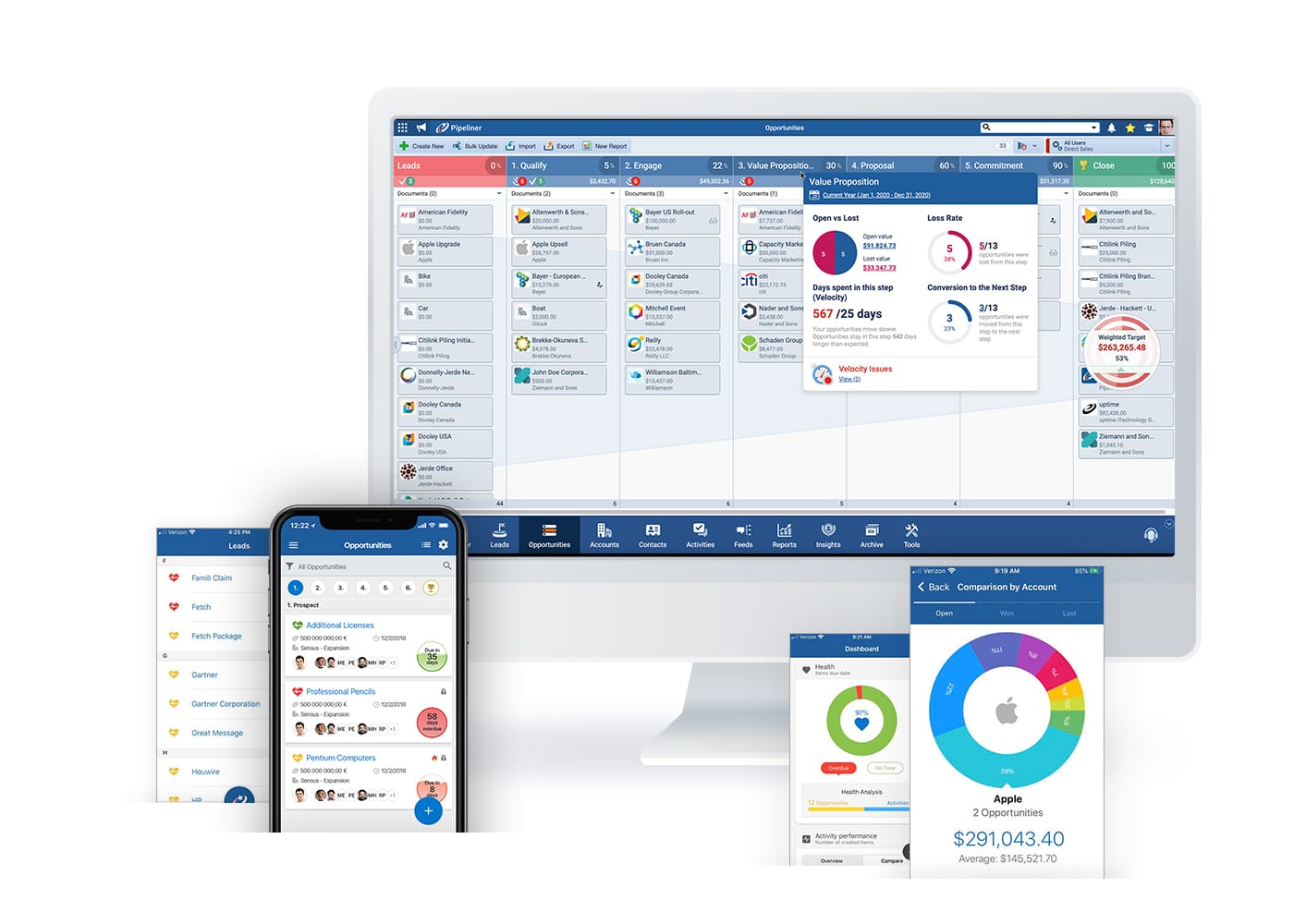
Contact Management Software vs CRM
Although contact management software and CRM software share some features, there is a difference: A contact management system provides basic features, whereas CRM software integrates sales, marketing, and reporting tasks.
The following are some of the pros of CRM software:
- Real-time Data Access › Using a cloud-based CRM, you can access customer data in real-time and keep your entire team updated on any new information or changes to contacts.
- CRMs frequently use third-party integrations to fill in data gaps automatically. Third-party apps can even be used to analyze customers’ social media accounts.
- Collaboration › Often in business, brainstorming generates new ideas and can aid in closing a complex saleComplex Sale Complex Sale is a type of sale common in B2B markets involving multiple decision-makers, custom service or purchase agreements, and relatively longer sales cycles..
Your Content Goes Here


